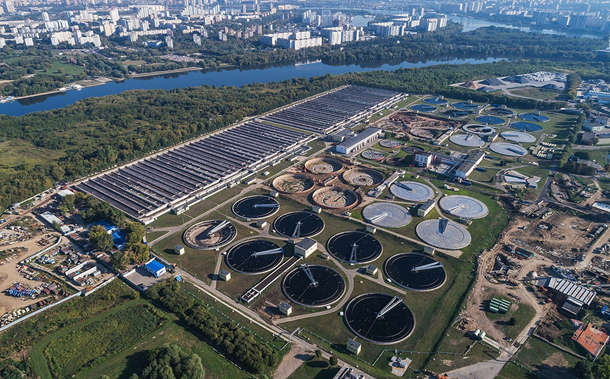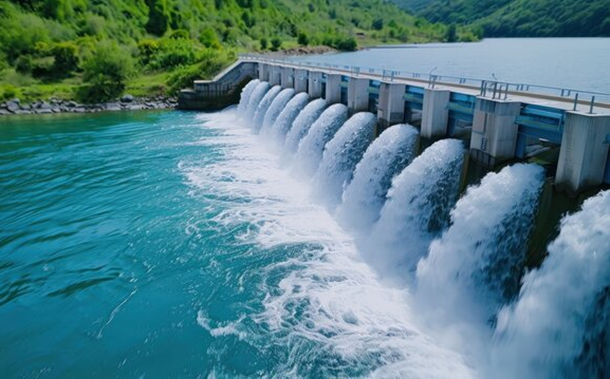Evaluation of Factors Influencing Maritime Dangerous Cargo Transport Accidents-Induced Crew Fatalities and Serious Injuries
Downloads
Doi:10.28991/CEJ-2022-08-10-05
Full Text:PDF
Downloads
[2] Erkut, E., Tjandra, S. A., & Verter, V. (2007). Chapter 9 Hazardous Materials Transportation. Handbooks in Operations Research and Management Science, 14(C), 539–621, Elsevier, Amsterdam. Netherlands. doi:10.1016/S0927-0507(06)14009-8.
[3] Zhao, B. (2016). Facts and lessons related to the explosion accident in Tianjin Port, China. Natural Hazards, 84(1), 707–713. doi:10.1007/s11069-016-2403-0.
[4] Mehan, A., & Jansen, M. (2020). Beirut Blast: A port city in crisis. The Port City Futures Blog. Available online: https://philpapers.org/rec/MEHBBA-2 (accessed on May 2022).
[5] Yang, J., Wan, J., Ma, Y., Zhang, J., & Hu, Y. (2020). Characterization analysis and identification of common marine oil spill types using hyperspectral remote sensing. International Journal of Remote Sensing, 41(18), 7163–7185. doi:10.1080/01431161.2020.1754496.
[6] Lecue, M., & Darbra, R. M. (2019). Accidents in European ports involving chemical substances: Characteristics and trends. Safety Science, 115(1), 278–284. doi:10.1016/j.ssci.2019.02.015.
[7] Saruchera, F. (2020). Determinants of effective high-risk cargo logistics at sea ports: A case study. Journal of Transport and Supply Chain Management, 14. doi:10.4102/jtscm.v14i0.488.
[8] Khan, R. U., Yin, J., Mustafa, F. S., & Wang, S. (2022). Analyzing human factor involvement in sustainable hazardous cargo port operations. Ocean Engineering, 250, 111028. doi:10.1016/j.oceaneng.2022.111028.
[9] Weng, J., Yang, D., Chai, T., & Fu, S. (2019). Investigation of occurrence likelihood of human errors in shipping operations. Ocean Engineering, 182, 28–37. doi:10.1016/j.oceaneng.2019.04.083.
[10] Khan, R. U., Yin, J., Mustafa, F. S., & Ahmad Farea, A. O. (2022). A data centered human factor analysis approach for hazardous cargo accidents in a port environment. Journal of Loss Prevention in the Process Industries, 75, 104711. doi:10.1016/j.jlp.2021.104711.
[11] Zhou, L., Fu, G., & Xue, Y. (2018). Human and organizational factors in Chinese hazardous chemical accidents: a case study of the ‘8.12' Tianjin Port fire and explosion using the HFACS-HC. International Journal of Occupational Safety and Ergonomics, 24(3), 329–340. doi:10.1080/10803548.2017.1372943.
[12] Huang, P., & Zhang, J. (2015). Facts related to August 12, 2015 explosion accident in Tianjin, China. Process Safety Progress, 34(4), 313–314. doi:10.1002/prs.11789.
[13] Hua, W., Chen, J., Qin, Q., Wan, Z., & Song, L. (2021). Causation analysis and governance strategy for hazardous cargo accidents at ports: Case study of Tianjin Port's hazardous cargo explosion accident. Marine Pollution Bulletin, 173(4), 113053. doi:10.1016/j.marpolbul.2021.113053.
[14] Ellis, J. (2010). Undeclared dangerous goods - Risk implications for maritime transport. WMU Journal of Maritime Affairs, 9(1), 5–27. doi:10.1007/BF03195163.
[15] Ellis, J. (2011). Analysis of accidents and incidents occurring during transport of packaged dangerous goods by sea. Safety Science, 49(8–9), 1231–1237. doi:10.1016/j.ssci.2011.04.004.
[16] Ronza, A., Carol, S., Espejo, V., Vílchez, J. A., & Arnaldos, J. (2006). A quantitative risk analysis approach to port hydrocarbon logistics. Journal of Hazardous Materials, 128(1), 10–24. doi:10.1016/j.jhazmat.2005.07.032.
[17] Chen, J., Zheng, H., Wei, L., Wan, Z., Ren, R., Li, J., Li, H., Bian, W., Gao, M., & Bai, Y. (2020). Factor diagnosis and future governance of dangerous goods accidents in China's ports. Environmental Pollution, 257, 113582. doi:10.1016/j.envpol.2019.113582.
[18] Xie, T., Lu, X., Wang, G., & Lin, F. (2021). Research on Safety Risk, Prevention and Control in Port Dangerous Goods Container Yard. Journal of Physics: Conference Series, 1910(1), 12029. doi:10.1088/1742-6596/1910/1/012029.
[19] Rí¸mer, H., Brockhoff, L., Haastrup, P., & Styhr Petersen, H. J. (1993). Marine transport of dangerous goods. Risk assessment based on historical accident data. Journal of Loss Prevention in the Process Industries, 6(4), 219–225. doi:10.1016/0950-4230(93)80003-5.
[20] Rí¸mer, H., Haastrup, P., & Styhr Petersen, H. J. (1995). Accidents during marine transport of dangerous goods. Distribution of fatalities. Journal of Loss Prevention in the Process Industries, 8(1), 29–34. doi:10.1016/0950-4230(95)90059-X.
[21] Li, K. X., & Wonham, J. (2001). Maritime legislation: new areas for safety of life at sea. Maritime Policy and Management, 28(3), 225–234. doi:10.1080/03088830110048880.
[22] Nielsen, D., & Roberts, S. (1999). Fatalities among the world's merchant seafarers (1990-1994). Marine Policy, 23(1), 71–80. doi:10.1016/S0308-597X(98)00017-7.
[23] Li, K. X. (1998). Seamen's accidental deaths worldwide: A new approach. Maritime Policy and Management, 25(2), 149–155. doi:10.1080/03088839800000025.
[24] Zheng, Y., Talley, W. K., Jin, D., & Ng, M. W. (2016). Crew injuries in container vessel accidents. Maritime Policy & Management, 43(5), 541–551. doi:10.1080/03088839.2016.1150610.
[25] Chen, J., Zhang, W., Li, S., Zhang, F., Zhu, Y., & Huang, X. (2018). Identifying critical factors of oil spill in the tanker shipping industry worldwide. Journal of Cleaner Production, 180, 1–10. doi:10.1016/j.jclepro.2017.12.238.
[26] Shemshadi, A., Shirazi, H., Toreihi, M., & Tarokh, M. J. (2011). A fuzzy VIKOR method for supplier selection based on entropy measure for objective weighting. Expert Systems with Applications, 38(10), 12160–12167. doi:10.1016/j.eswa.2011.03.027.
[27] Zhang, H., Gu, C., Gu, L., & Zhang, Y. (2011). The evaluation of tourism destination competitiveness by TOPSIS & information entropy – A case in the Yangtze River Delta of China. Tourism Management, 32(2), 443–451. doi:10.1016/j.tourman.2010.02.007.
[28] Wu, H. Y., & Lin, H. Y. (2012). A hybrid approach to develop an analytical model for enhancing the service quality of e-learning. Computers & Education, 58(4), 1318–1338. doi:10.1016/j.compedu.2011.12.025.
[29] Hsiao, S. W., & Tsai, H. C. (2004). Use of gray system theory in product-color planning. Color Research & Application, 29(3), 222–231. doi:10.1002/col.20009.
[30] Kuo, Y., Yang, T., & Huang, G. W. (2008). The use of grey relational analysis in solving multiple attribute decision-making problems. Computers & Industrial Engineering, 55(1), 80–93. doi:10.1016/j.cie.2007.12.002.
[31] Vatansever, K., & AkgŠ±l, Y. (2018). Performance evaluation of websites using entropy and grey relational analysis methods: The case of airline companies. Decision Science Letters, 7(2), 119–130. doi:10.5267/j.dsl.2017.6.005.
[32] Chae, S., & Yoshida, T. (2010). Application of RFID technology to prevention of collision accident with heavy equipment. Automation in Construction, 19(3), 368–374. doi:10.1016/j.autcon.2009.12.008.
[33] Youssef, S. A. M., & Paik, J. K. (2018). Hazard identification and scenario selection of ship grounding accidents. Ocean Engineering, 153, 242–255. doi:10.1016/j.oceaneng.2018.01.110.
[34] Li, J., & Huang, Z. (2012). Fire and explosion risk analysis and evaluation for LNG ships. Procedia Engineering, 45, 70–76. doi:10.1016/j.proeng.2012.08.123.
[35] European Maritime Safety Agency. (2020). Annual overview of marine casualties and incidents. European Maritime Safety Agency (EMSA), Lisbon, Portugal.
[36] Paolo, F., Gianfranco, F., Luca, F., Marco, M., Andrea, M., Francesco, M., Vittorio, P., Mattia, P., & Patrizia, S. (2021). Investigating the Role of the Human Element in Maritime Accidents using Semi-Supervised Hierarchical Methods. Transportation Research Procedia, 52, 252–259. doi:10.1016/j.trpro.2021.01.029.
[37] Hansen, H. L., Nielsen, D., & Frydenberg, M. (2002). Occupational accidents aboard merchant ships. Occupational and Environmental Medicine, 59(2), 85–91. doi:10.1136/oem.59.2.85.
- Authors retain all copyrights. It is noticeable that authors will not be forced to sign any copyright transfer agreements.
- This work (including HTML and PDF Files) is licensed under a Creative Commons Attribution 4.0 International License.![]()














